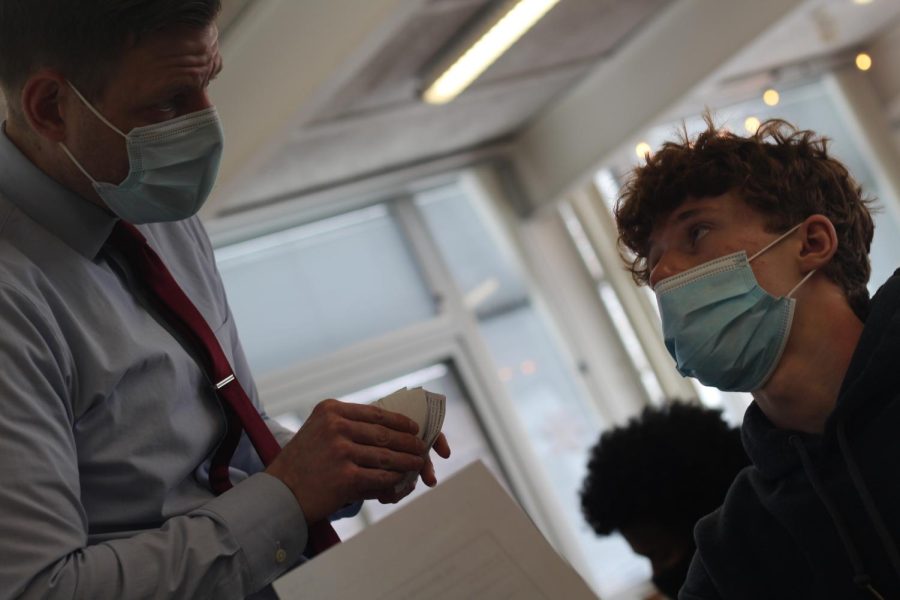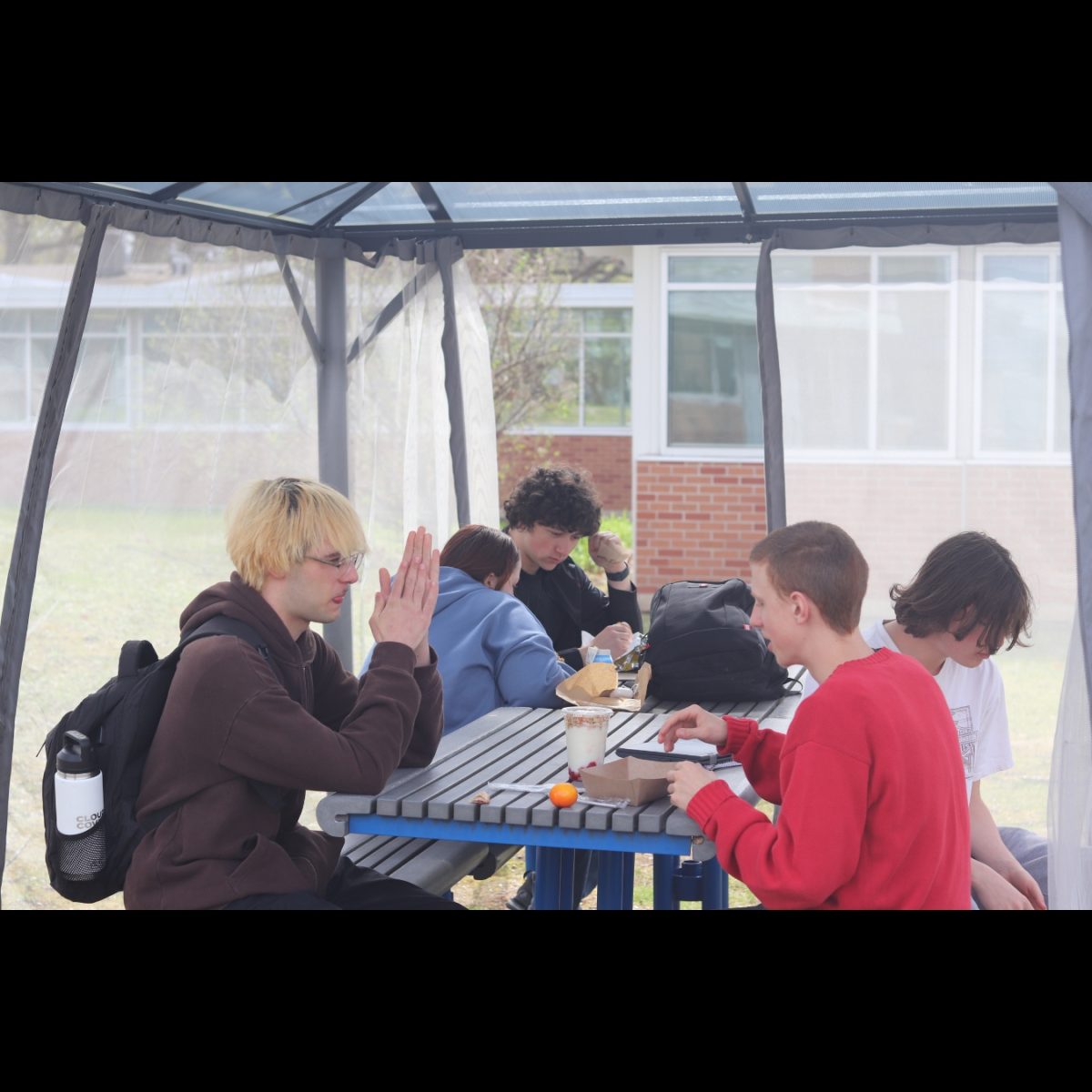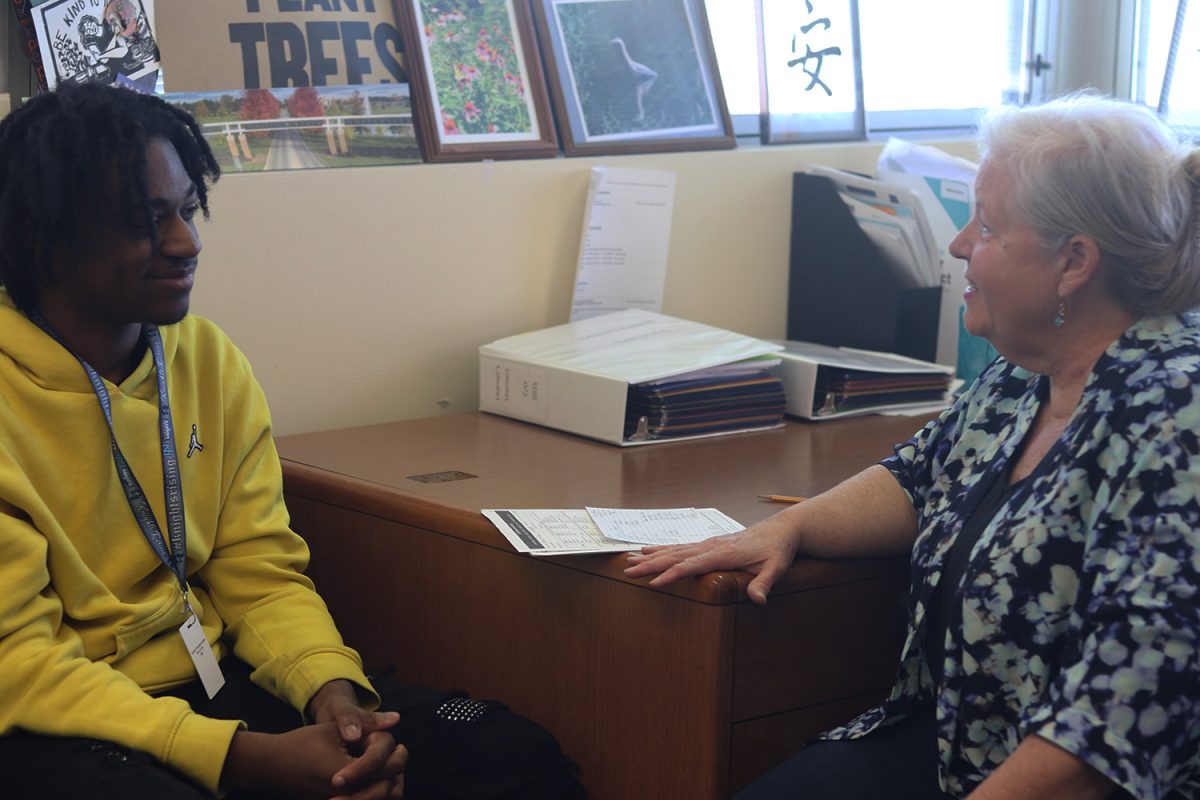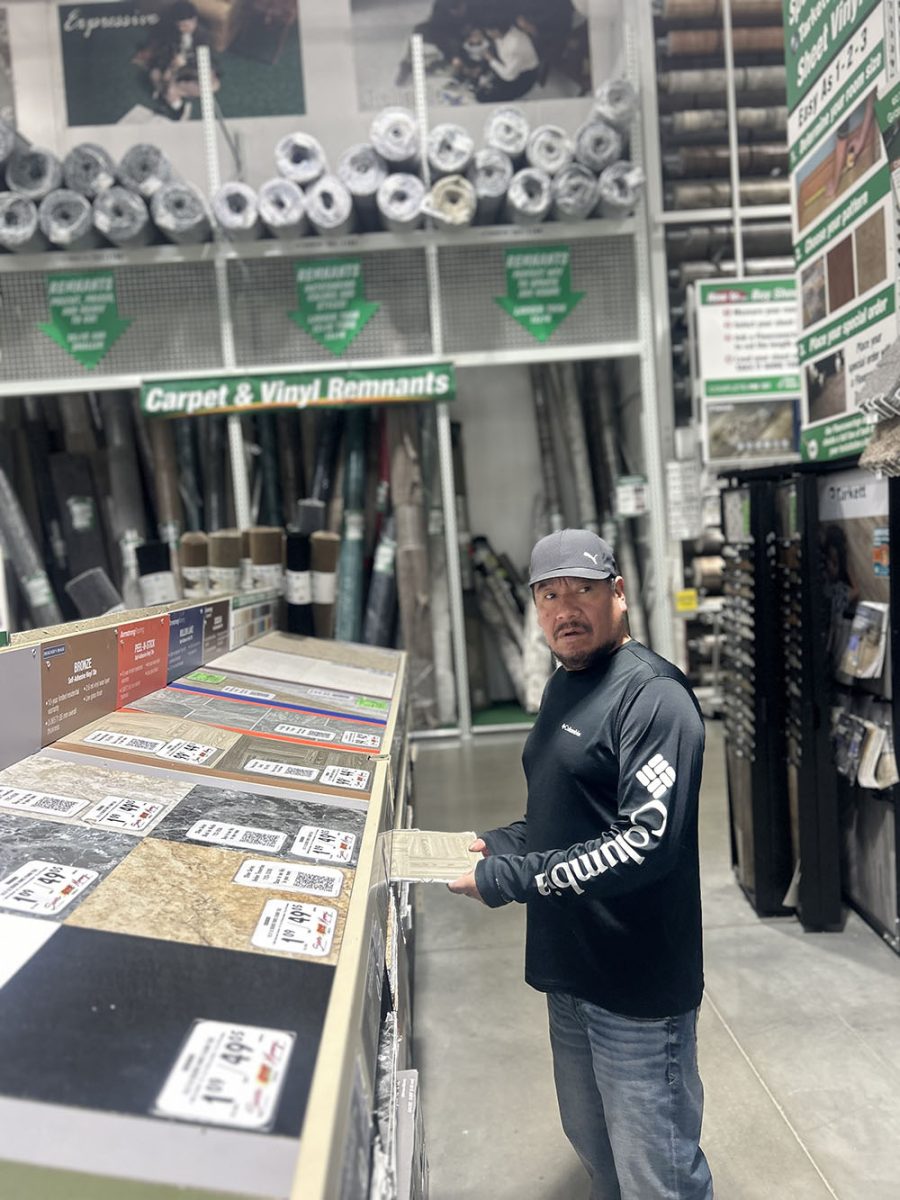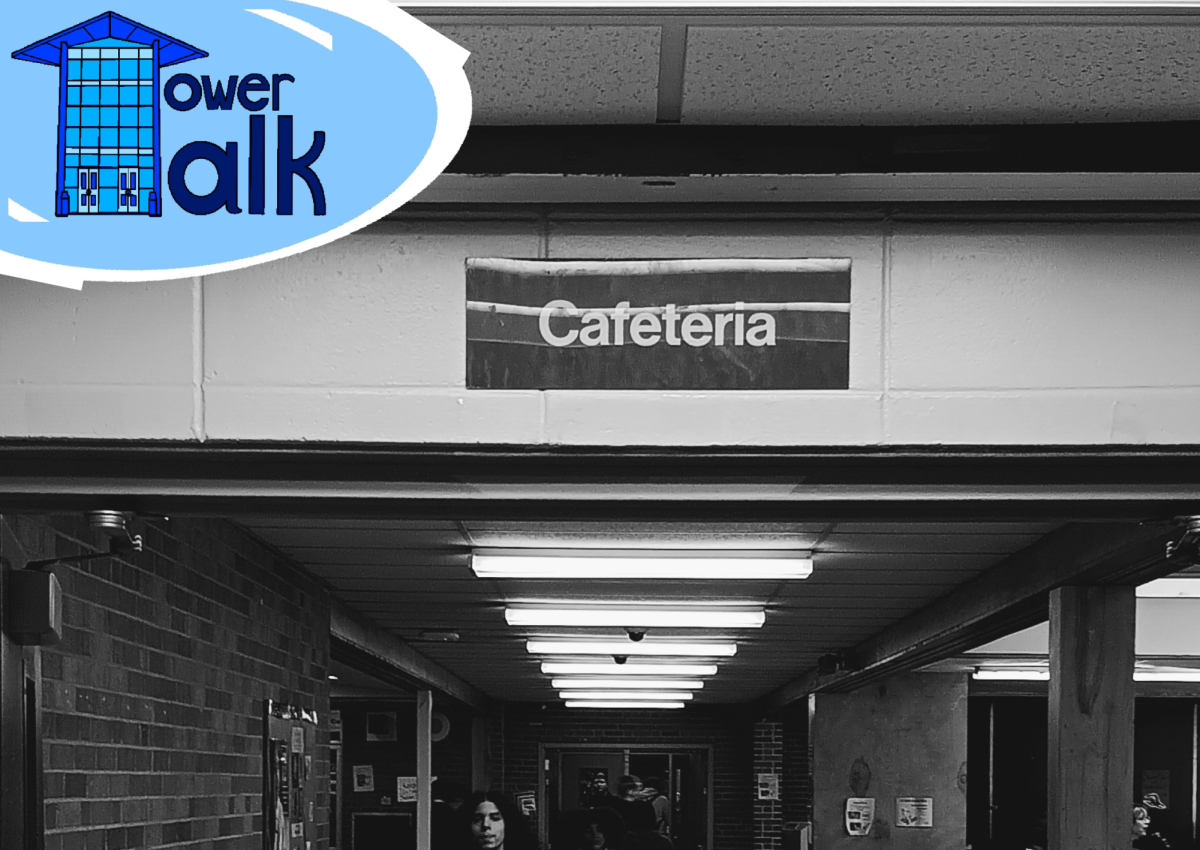Student-teacher relationships: the value of creating bonds between staff and students
Credit: Amady Mboup
Government and Politics teacher Kyle Shack gives guidance to Junior Duncan Scheele during their Congressional Roleplay. Shack is known for giving one on one attention to students to encourage their success.
February 17, 2022
In tandem with the wealth of knowledge that children gain during their K-12 schooling, having social interactions and learning the traditions and norms of not only their community, but also the world is a key function of school, especially within the United States.
As customary as it is for students to interact with and learn from their peers, for socialization in school to be as positive and nurturing as possible, as well as grow the minds of students, a large contribution must come from teachers. This begs the question: how important is it for positive teacher-student bonds to be cultivated and perpetuated throughout grade-school?
Returning from virtual learning, during the period between winter break and spring break with fewer breaks and events to look forward to, students have been searching for the motivation they need to get through the harsh, bitter weeks. One overlooked solution to this issue may come in the form of teachers, more specifically, teachers putting all their effort into ensuring the success of their students.
When a teacher is open with the class and is transparent about things that are going on with their lives, it makes me feel like I can trust them. If a teacher is personable towards me, I know that I can be open and trust them.
— Elizabeth McFarlen
Studies show that positive student-teacher relationships oftentimes promote success and academic achievement, encourage good attendance, and help students to become more motivated, regulated, and more likely to achieve their goals.
“It adds another reason to why I want to come to school,” said junior Yacine Lo. “If I can just say ‘Yay, I’m going to fifth hour because blah blah blah teacher will be there’ then that makes everything [being motivated] a lot easier.”
Kids knowing that inside their classrooms they will be met with love, support, and good vibes enables them to find a reason to keep up the good work when there may be no other source of support. Building a positive relationship may even reduce the kind of behaviors that may interfere with a learning environment.
“I’m more focused. I’m not goofing off,” said sophomore Caleb Jackson. “They’re the one giving me my grades so I think it’s important to have some type of relationship with them so they can understand me better.”
A 2016 study from the website, EducationWeek, reported on the benefits gained from teachers maintaining good relationships with their students. “Students of teachers who boosted their ratio to five positive comments and interactions for every negative one had significantly less disruptive behavior and more time on task academically than the students of a control group of teachers,” Sarah D. Sparks wrote.
In student-teacher relationships, the duty to create and maintain a relationship is not only on the students, but in large part, on the teacher themselves. People that have been through the educational system will tell you that some teachers put more of an effort forth to create these warm bonds than others, and that sometimes a more distant teacher may make no effort at all, but the reasoning and thoughts behind this disparity is a topic seldom discussed.
English teacher D.J. Desmond, a new teacher who began teaching at Loy Norrix in the 2020-2021 school year, reflects back on his first attempts at bonding with students in-person.
Desmond said, “My first trimester back in-person I was focusing a lot on the students that were giving me a hard time. Focusing on the kids I was really connecting with actually completely changed a couple weeks in that trimester, and really just shifted my mood and my perspective on things.”
Coming from a completely neutral perspective as a new teacher, Desmond shows the complex nature of building relationships with students as he learns that some strategies work for garnering the bond and others don’t.
Knowing that 25-40% of new teachers leave the field within five years according to Waterford.org, creating positive and healthy relationships are essential to the stability of a classroom for both the teacher and the student, so ignoring them isn’t a reasonable option.
Desmond further explained the dangerous space teachers navigate as they seek to bond with their students, saying, “I think sometimes [bonds] can be too much but, …I would just say anything that feels like you are actually friends with the student [should wait] at least until they graduate, but when they’re still a student, being actual friends with them can kind of blur the line there.”
In the struggle to properly bond with students, teachers find what works for them and stick with it, which looks different for each teacher and creates varying cultures from one classroom to the next. Especially in the high school setting, teachers must find a routine that suits their teaching style and is compatible with the students they typically teach, all the while dealing with the instability of their classroom rosters as students come and go each trimester.
Government teacher Kyle Shack said, “I don’t think of a bond with a student as being a destiny you can arrive at… I think of it of like a constant in teaching.” Shack continued, “I like to think that I don’t form relationships with students because forming a relationship is good, I like to think that I form relationships with students because forming relationships is a powerful component of helping someone be successful and helping someone learn.”
For a teacher like Shack, this perspective is likely extremely effective since required courses are often filled with students who are either disinterested in or detached from the class’ subject matter. In order to engage his students and properly present his much needed material, a direct and focused effort to build relationships is probably the best way to go. However, there are many other approaches that seem to accomplish the same effect.
Social studies teacher Niambi McMillon, who mostly teaches electives such as law and African-American studies, said, “I naturally want to connect with students because I remember how adults did not take young people seriously when I was young. Having a bond makes my career easier and more fun. Students perform better when there is a bond.”
McMillon’s thought process speaks to a simple, overlooked fact about all teachers that dictates every decision they make, especially when it comes to making bonds: teachers are all humans too. As such, the personal experiences, wants and ideas they’ve gathered throughout their life shape how they interact with all other people, especially students.
This means that the way teachers form bonds and the degree to which they do comes from a personal place the same way a student’s willingness to bond with their teachers does. Therefore each and every bond from teacher to student is a representation of two people connecting on a personal level that works to make both parties feel more comfortable and excited to be in such a space.
Junior Javon Harris said, “A teacher that notices your feelings or your absence as well as a teacher that is able to recognize you and check on you on a daily basis is a type of teacher you would want to have a relationship with.”
In agreement with Harris, senior Hank Perkins said, “When they check in on me to see I am doing okay and when they help me with the work they assign if I am having trouble.”
One thing most teachers, students and scientific articles on the subject agree on is that the cultivation of relationships between students and teachers is something that is extremely valuable to any successful learning environment, and without them, schooling as we know it would forever be changed. It’s been proven time and time again that students feel better when a good relationship is formed, and teachers feel students learn better in a class where they have a bond with a teacher, meaning both parties recognize and appreciate the value of building a good relationship.
A school with a focus in maintaining positive relationships between students and teachers will be more likely to see success and happiness in their students and teachers as they enjoy working in the environment just as much as the students enjoy learning there.
Beautifully put, senior Elizabeth McFarlen said, “When a teacher is open with the class and is transparent about things that are going on with their lives, it makes me feel like I can trust them. If a teacher is personable towards me, I know that I can be open and trust them.”lo


